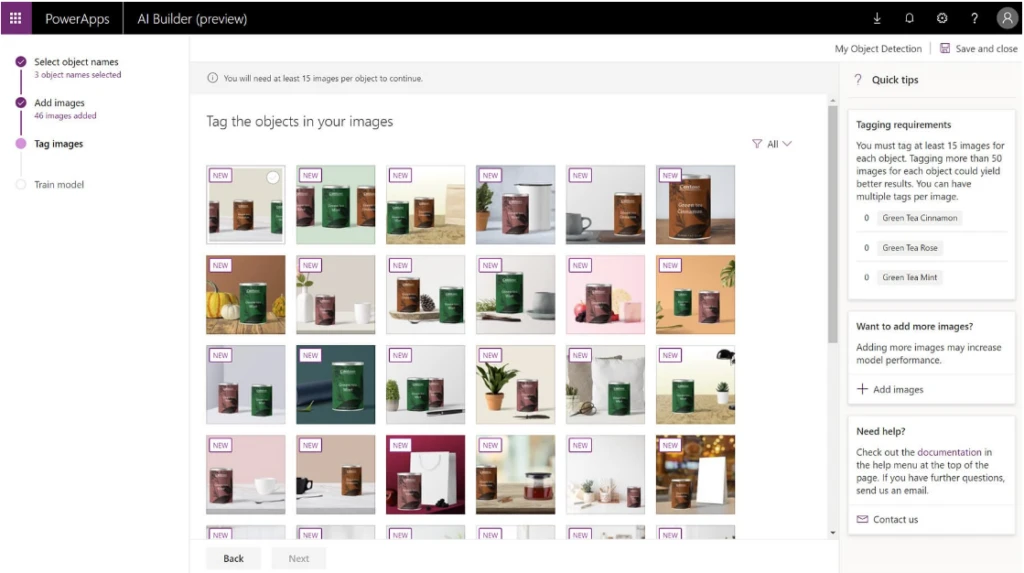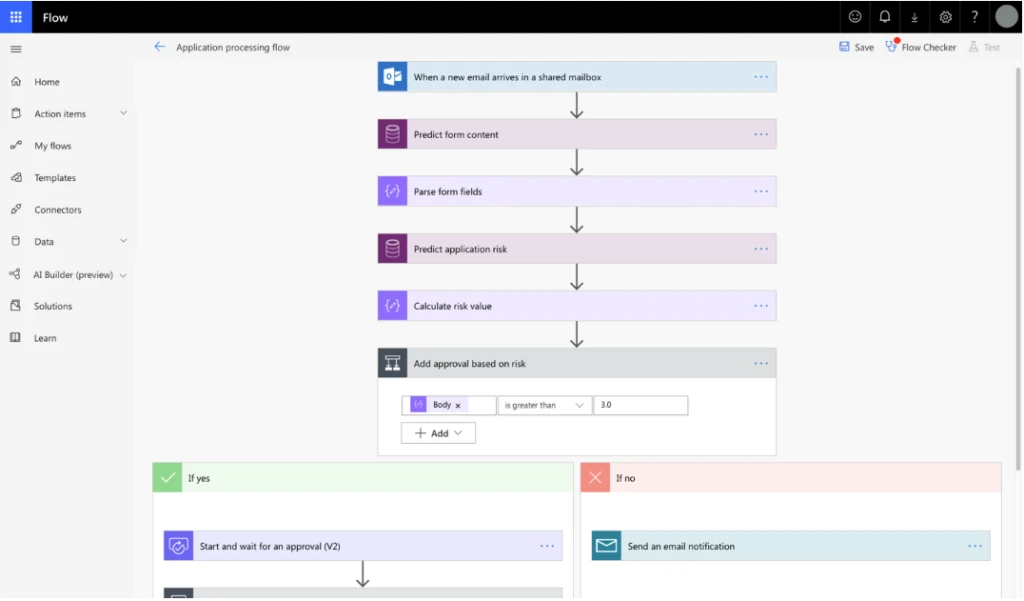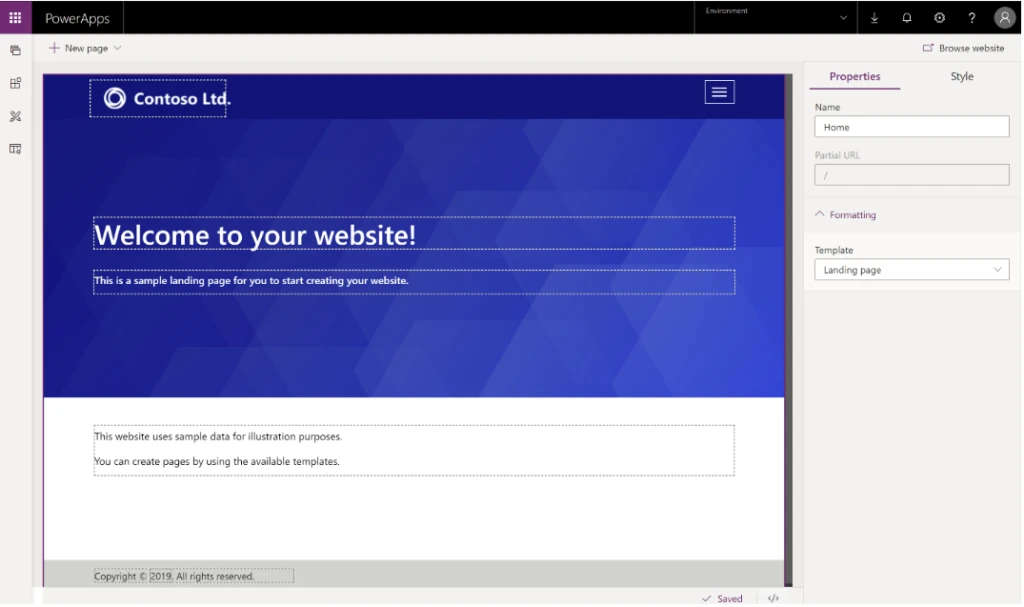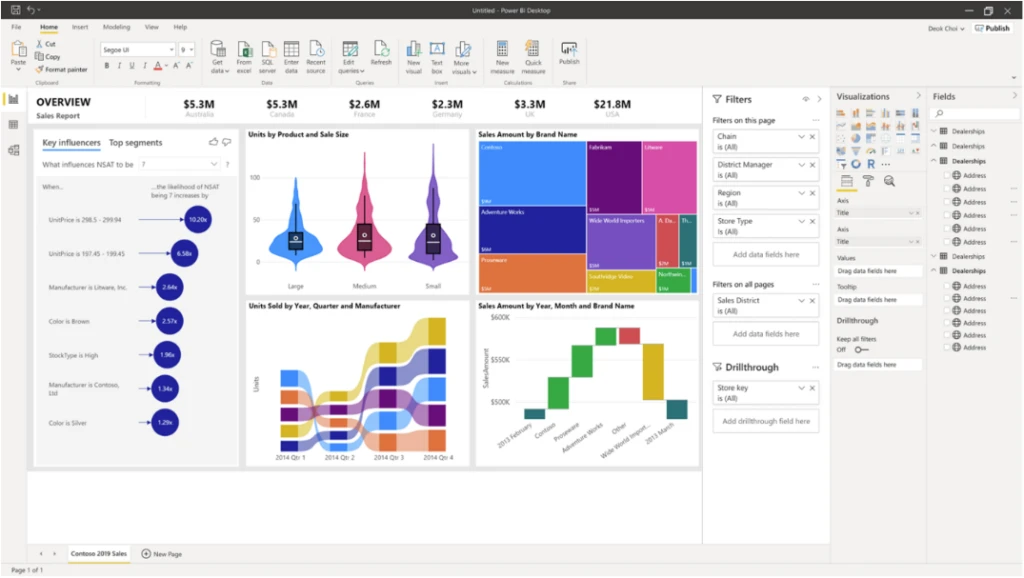
Announcing new features, growing demand for Dynamics 365 and Power Platform
2019 release wave 2 plan, AI Builder, updated AI capabilities, and a new look for Power BI, PowerApps Portals, and enhancements for Microsoft Flow all coming this year.
Today, I had the opportunity to join more than 4,500 members of our community at the Microsoft Business Applications Summit (MBAS) in Atlanta. MBAS is a special event for us because it’s our chance to connect in person with the makers, thinkers, and developers that make up our community.
This is also a moment when we get to showcase some of the amazing work our customers are doing. We’re thrilled to have so many customers join us in Atlanta this year, including G&J Pepsi and Grant Thornton, who joined me onstage during the opening keynote.
We’re also sharing some important news this week.
First—a first look at the 2019 release wave 2 plans! For those who want to see what’s coming, you can dive into the Dynamics 365 2019 release wave 2 plan and Power Platform 2019 release wave 2 plan. We look forward to telling you more about the 2019 release wave 2 in the coming months before these features go live starting October 1st.
Second—we’re announcing important Power Platform advancements.
Earlier this year I outlined our vision for the Power Platform. Along with Satya and the rest of the leadership team, I am bullish and enthusiastic for all things Power Platform. But what I appreciate most is the work of our community and what they DO with the Power Platform.
Today, we are giving our community more tools so they can take full advantage of what the Power Platform has to offer. On behalf of the entire team, I am incredibly proud to announce the following:
- AI Builder and PowerApps Portals—two brand new capabilities
- Accelerating intelligent automation in Microsoft Flow with built-in AI
- Updated AI capabilities and an exciting new look for Power BI
This is a great time to be innovating with Dynamics 365 and the Power Platform, and I love being on this journey with you all. Please find more information below about today’s news along with details for how customers and partners like G&J Pepsi are already taking advantage of this work.
Introducing AI Builder
Today, we’re excited to announce AI Builder, the no-code AI capability on the Power Platform supporting PowerApps and Flow.
AI Builder enables everyone to leverage AI and machine learning to make their apps and automations more intelligent. It takes common AI scenarios and provides point-and-click solutions for app makers to solve everyday tasks like forms processing, object detection, and text and binary classification.
PowerApps already enables employees to easily create applications for your business. AI Builder now provides a way for app makers—professional and citizen developers alike—to add AI capabilities to those apps.
The potential uses for AI Builder span industries and scenarios for banking, hospitality, manufacturing, and more. For example, an organization may want to improve customer service so they can use AI to analyze customer feedback responses, map them into categories, and generate an AI model to classify and respond to customer feedback as it’s received.

The new AI Builder enables users to easily add AI capabilities to PowerApps and Microsoft Flow.
G&J Pepsi, headquartered in Cincinnati, Ohio, has more than 1,600 employees focused on manufacturing, distributing, and marketing the full line of Pepsi-Cola products. The G&J Pepsi IT team used AI Builder and PowerApps to create the next generation of their Store Audit App, enabling better mobility and efficiency for field personnel whose job is to assess product needs on the shelves in stores.
“With AI Builder, we were able to easily build an AI model to help automatically identify and track our products using the object detection model. For our field worker, it’s now as simple as taking a photo and letting AI builder do the rest.” – Eric McKinney, Enterprise Business Systems Manager at G&J Pepsi.
Delivering intelligence in Microsoft Flow
The no-code AI Builder capability is also coming to Microsoft Flow. Flow provides a powerful visual experience for a range of users to build everything from personal automation to business-critical enterprise-wide processes. With AI Builder, we are now making it easier for users and organizations to optimize these processes with intelligence without having advanced knowledge of how AI works.
For example, Flow makers can now extract meaningful data from images and text that can drive logic in their processes. Today, many processes involve paper forms such as a rental or job application. Historically, the first step in processing these forms would be to have someone look at the paper and manually type in each of the fields on their PC.
Now with AI Builder and Microsoft Flow, flows can automatically pick up scanned documents from an incoming email or a file server and recognize all the content. Based on the values in the form, different steps can run—from sending out simple notifications to performing a credit check.

Microsoft Flow enables users to automatically process and route analog forms.
Beyond parsing content in documents, AI Builder can also learn based on historical performance. For example, it can predict the risk of an application and, depending on how high that risk is, add additional approval actions to a business process. All of this is possible for Flow makers without having any expertise or experience with AI by leveraging guided, point-and-click experiences.
Leveraging blockchain in PowerApps and Microsoft Flow
Blockchain can bring trust and transparency to business processes that span multiple business partners. Using blockchain is easier than ever with the ability to write low-code applications using the Power Platform and Azure Blockchain Service.
Applications built on blockchain using PowerApps and Microsoft Flow can easily create attestable workflows that bring together data from every point in the business process across the value chain. For mobile clients, PowerApps enables developers to effortlessly capture all of the information from the phone’s sensors (barcodes, photos, GPS coordinates, etc.) and send it to a smart contract on a blockchain. Using connectors for popular enterprise blockchains in Microsoft Flow, you can easily integrate blockchain with popular SaaS, legacy enterprise systems, web and messaging services, and different types of data technologies.
Some industry examples that leverage the power of blockchain and the Power Platform include:
- Multi-party supply chain: Building applications and workflows that provide irrefutable proof of delivery of shipments to manage shrinkage risk between point-of-manufacturing and point-of-sales.
- Food safety: Users can get real time insights when goods that can be impacted by temperature and humidity are in transit. Blockchain can provide real time insight with trustworthy data that can help avoid costly public health issues, streamline return processes, and dispute resolution.
- Attest genuine media: Many industries have a need to ensure that documents have not been tampered with. Build applications that can attest and/or validate that media is genuine with PowerApps and Flow.
Announcing PowerApps Portals
PowerApps can now reach users external to an organization with PowerApps Portals, coming soon to public preview.
PowerApps customers can now create websites that can be accessed by external users with a wide variety of identities including personal accounts, LinkedIn, and other Azure Active Directory organizations, and enable anonymous access to content. Portals works exclusively over data in the Common Data Service and customers benefit from its robust security and advanced capabilities for modelling business processes, which now includes low-code AI with the release of AI Builder.
PowerApps Portals also comes with a reimagined maker experience, embracing the core PowerApps principle of low-code productivity for everyone. With these new capabilities, app makers can create a website from scratch using pre-built templates, and then customize the layout and content using components like forms, views, and dashboards.
Portals capability was previously only available as an add-on to Dynamics 365 and is used extensively by customers including the University of Canterbury, Internet Initiative Japan, and Wineshipping to serve millions of users for scenarios like partner management, customer support, community feedback, employee benefits, and more. With this release, we’re enabling the creation of a custom portal directly from PowerApps.com using the Common Data Service, which will open new categories of use cases.

With PowerApps Portals, users can now create websites that can be accessed by external users.
New AI capabilities in Power BI
Power BI is a popular tool that millions of users trust for exploring data. More than 25 million models are hosted in the Power BI service, more than 12 million queries are processed each hour, and more than 20 petabytes of data are ingested into the Power BI service each month.
Today, we’re excited to announce new Power BI AI capabilities, and more.
Power BI has been a pioneer in applying AI to business intelligence and making AI accessible to everyone. We recently previewed several new AI capabilities that enable users to detect objects in images, analyze free-form text, build new machine learning models, and automatically understand what drives outcomes, all with point-and-click simplicity.
We have important updates to Power BI AI capabilities:
- Text and image analytics in Power BI powered by Azure Cognitive Services, and the ability to invoke Azure ML models are both now generally available.
- We’re announcing two new AI visuals: Distribution Changes analyzes what makes a distribution look different, and the Decomposition Tree enables users to drill into any dimension to understand what is driving a key metric.
- We are expanding Power BI’s vision and text analytics capabilities and adding entity detection and text and handwriting recognition, enabling one-click transformations for insights on unstructured data.
- For enterprises that need custom lifecycle management or further tuning, models created in Power BI can be exported to Azure ML.
And finally, we are extending Power BI’s natural language capabilities. The new updates include the ability to train Q&A so it understands and adapts to company-specific language like synonyms, phrasings, or specific domains, and the ability for report authors to see every natural-language question asked so they can make adjustments to how Power BI responds.
Kinepolis is a cinema group operating 53 complexes throughout Belgium, The Netherlands, France, Spain, Luxembourg, Switzerland, and Poland, as well as 44 cinemas in Canada. The company uses Power BI AI capabilities to understand how they can improve their visitor experience by analyzing the sentiment of customer reviews and tweets.
“Kinepolis serves visitors in and from many countries, who vocalize their opinion through various channels. With text analytics in Power BI, we are able to structure and analyze all this feedback. It allows us to score the sentiment of our visitor reviews without investing in the data science behind it.” – Carlo Wambeke, technical lead BI at Kinepolis.
Welcoming a new look for Power BI
In addition to the updates above, we’re also releasing a new look for Power BI, so it’s more closely aligned to the experiences in Office 365 already familiar to users around the world. The new user interface makes it easier than ever to create reports, explore data, get answers, and make decisions without having to learn specialized skills.
We’re also making users more productive through new features like report commenting which allows people to collaborate on their data, and Siri shortcuts for our iOS mobile app, simplifying how users find data.

The new Power BI UI makes it easier than ever for users to explore data in a style that is familiar from Office 365.
New capabilities for a unified enterprise business intelligence platform
Organizations can now move to one modern, compliant platform as the single destination for business analytics with key enterprise-facing updates on enterprise-grade semantic models and reporting at worldwide scale. Paginated reports, available for over a decade in SQL Server and a staple of corporate reporting solutions, are generally available in Power BI this month, enabling pixel-perfect formatting and advanced export options. Additionally, organizations can encourage reuse and create a single source of truth with certified datasets, now available in preview. With future capabilities for data lineage, administrators can understand usage and plan changes.
For more information on today’s news, please refer to the following blogs:
AI Builder: Introducing AI Builder for the Power Platform
Microsoft Flow Updates: May Updates for Microsoft Flow
PowerApps Portals: Announcing PowerApps Portals to create websites for external users
Power BI Updates: Announcing New AI and Enterprise features for Power BI



